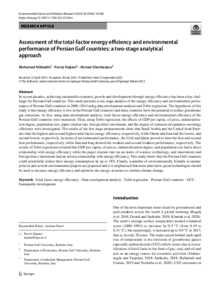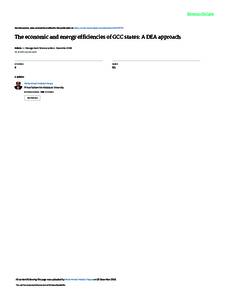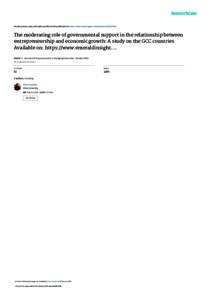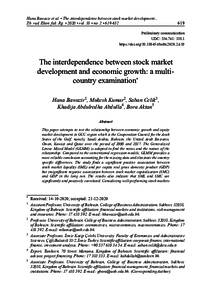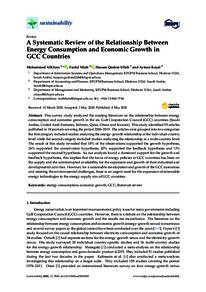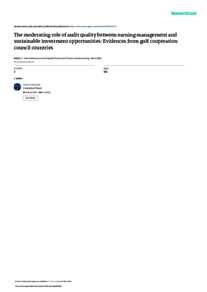Document
Assessment of the total-factor energy efficiency and environmental performance of Persian Gulf countries : a two-stage analytical approach.
Identifier
DOI: 10.1007/s11356-022-22344-x
Source
Environmental Science and Pollution Research. v. 30, 4, p. 10560-10598
Contributors
Hajiani, Parviz., Author
Ghorbanpur, Ahmad., Author
Country
Germany.
City
Berlin
Publisher
Springer Science and Business Media Deutschland GmbH.
Gregorian
2023-01-01
Language
English
Subject
English abstract
In recent decades, achieving sustainable economic growth and development through energy efficiency has been a key challenge for Persian Gulf countries. This study presents a two-stage analysis of the energy efficiency and environmental performance of Persian Gulf countries in 2000–2014 using data envelopment analysis and Tobit regression. The hypothesis of this study is that energy efficiency is low in the Persian Gulf countries and these countries have the potential to reduce greenhouse gas emissions. At first, using data envelopment analysis, total-factor energy efficiency and environmental efficiency of the Persian Gulf countries were measured. Then, using Tobit regression, the effects of GDP per capita, oil price, industrialization degree, population size, paper citation rate, foreign direct investment, and the degree of commercial openness on energy efficiency were investigated. The results of the first stage measurements show that Saudi Arabia and the United Arab Emirates had the highest and second highest total-factor energy efficiency, respectively, while Oman and Iran had the lowest, and second lowest, respectively. In terms of environmental performance, the UAE and Qatar proved to have the best and second best performance, respectively, while Iran and Iraq showed the weakest and second weakest performance, respectively. The results of Tobit regression revealed that GDP per capita, oil prices, industrialization degree, and population size had a direct relationship with energy efficiency while the paper citation rate (as an index of science, technology, and innovation) and foreign direct investment had an inverse relationship with energy efficiency. This study shows that the Persian Gulf countries could potentially reduce their energy consumption by up to 18%. Finally, a number of environmentally friendly economic policies and several environmental projects are proposed and it is emphasized that more innovative green technologies should be used to increase energy efficiency and optimize the energy structure to combat climate change.
ISSN
0944-1344
Resource URL
Category
Journal articles

